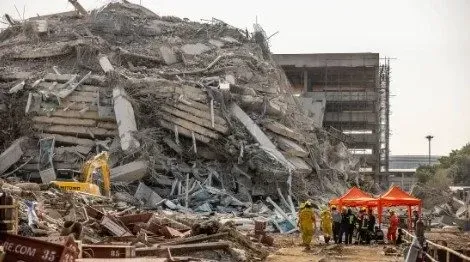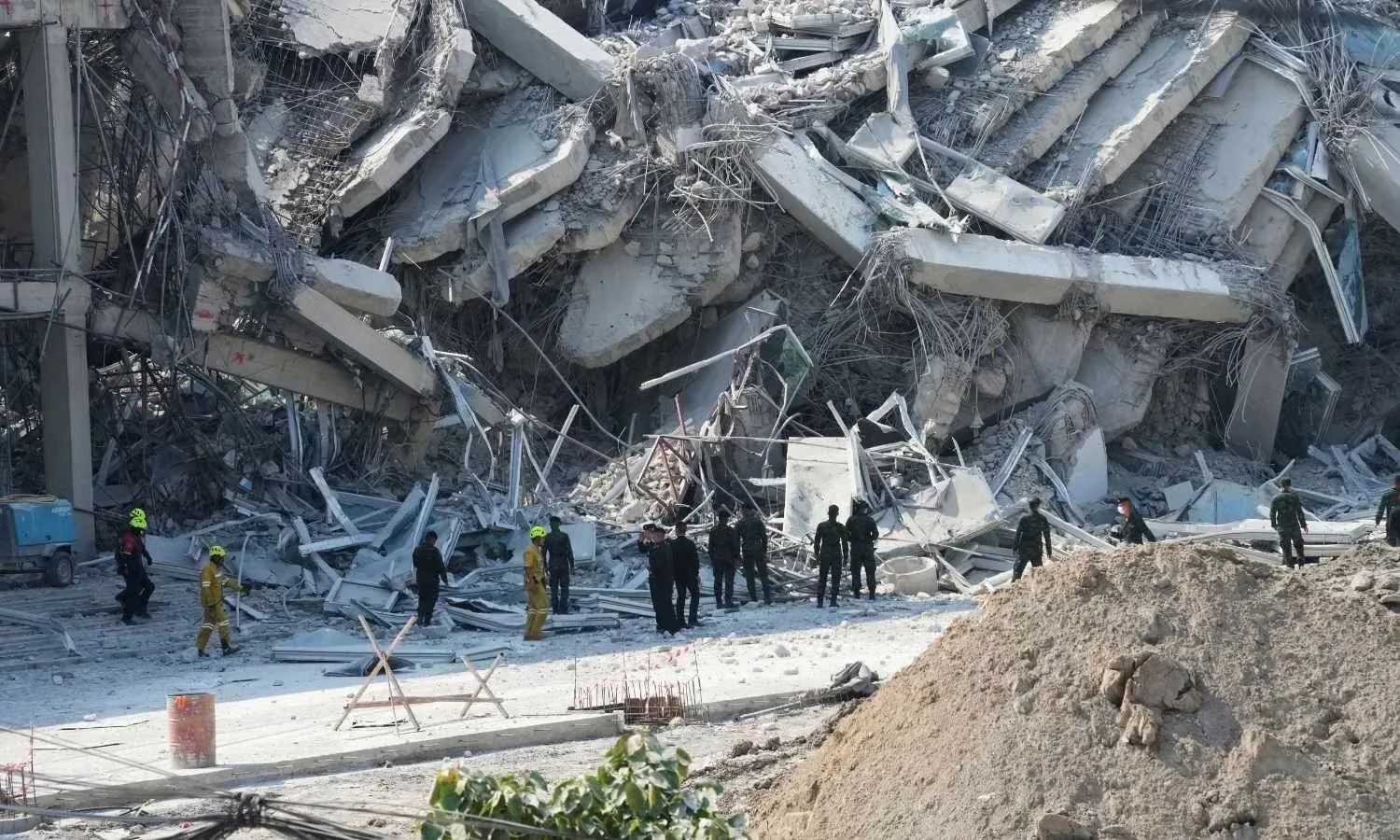A powerful 7.7 magnitude earthquake devastates Myanmar, leaving hundreds dead and injured. Global aid mobilizes as the region grapples with the aftermath.
The earth shuddered, a violent, merciless tremor that ripped through the heart of Myanmar, leaving a trail of shattered lives and crumbled structures. Friday’s 7.7 magnitude Myanmar Earthquake wasn’t just a seismic event; it was a raw, visceral reminder of nature’s untamed power. The ground buckled, buildings swayed precariously, and a wave of terror swept across the region, reaching far beyond Myanmar’s borders. From the bustling streets of Bangkok to the remote villages of Sagaing, the impact was profound, a stark testament to the fragility of human existence.
The Ground Beneath Us Gave Way: A Chronicle of Chaos
The epicenter, a mere 10 kilometers beneath the surface, amplified the quake’s destructive force. Bill McGuire, an earthquake expert at UCL, described it as “probably the biggest” mainland quake Myanmar has seen in three-quarters of a century. Roger Musson, from the British Geological Survey, explained the devastating impact of the shallow depth. “The buildings received the full force of the shaking,” he said. “The shockwaves weren’t dissipated as they moved from the fault up to the surface.”
In Naypyidaw, the capital, the scene was one of chaos. Roads cracked, buildings crumbled, and the 1,000-bed general hospital became a makeshift triage center. “Many injured people have been arriving,” a doctor, overwhelmed and exhausted, told AFP. “I haven’t seen anything like this before.” Rows of wounded, their faces etched with pain and shock, lined the hospital’s emergency department.
The Human Cost: Lives Lost, Futures Shattered
The numbers, stark and grim, painted a picture of devastation: at least 144 dead, over 700 injured, and countless lives irrevocably altered. The ruling junta chief, Min Aung Hlaing, made a rare plea for international aid, acknowledging the scale of the disaster. “Any country, any organization,” he urged, “please help.”
In Bangkok, the tremors triggered panic. Fraser Morton, a tourist from Scotland, recounted the terror in a bustling mall. “The whole building began to move,” he said. “Screaming, panic, people running the wrong way down the escalators.” The collapse of a 30-story under-construction tower added to the city’s woes, trapping dozens beneath the rubble. Thai Deputy Prime Minister Anutin Charnvirakul confirmed the grim toll: at least three dead, and scores missing. “We see several dead bodies under the rubble,” he said, his voice heavy with grief.
A Region in Crisis: Beyond Myanmar’s Borders
The Myanmar Earthquake didn’t confine its wrath to a single nation. The tremors reverberated across Southeast Asia, impacting Thailand, China, and parts of India. Bangkok, declared a “disaster area,” grappled with collapsed buildings and a city in shock. The Indian embassy in Bangkok issued an emergency number, a lifeline for its citizens caught in the chaos.
The United Nations, led by Secretary-General Antonio Guterres, mobilized its resources, recognizing the urgent need for international assistance. “The government of Myanmar has asked for international support,” Guterres stated. “Our team in Myanmar is already in contact.” The World Health Organization (WHO) activated its logistics hub in Dubai, preparing trauma supplies for the injured. “We expect that there will be many, many injuries that need to be dealt with,” WHO spokeswoman Margaret Harris explained.

Understanding the Seismic Fury
Why was this Myanmar Earthquake so damaging? The region’s geological history provided a grim context. Sagaing, the epicenter, has experienced numerous quakes in recent years, including a 6.8 magnitude event in 2012 that claimed lives. The shallow depth of Friday’s quake, however, amplified its destructive power.
A predictive analysis from the U.S. Geological Survey (USGS) warned of the potential for thousands of deaths and severe economic loss, highlighting the vulnerability of the region’s infrastructure. “Overall, the population in this region resides in structures that are vulnerable to earthquake shaking,” the USGS report stated.
Stories From the Rubble: Voices of Survival
Amidst the devastation, stories of resilience emerged. A rescue worker in Bangkok, his face streaked with dust and sweat, recounted pulling survivors from the collapsed tower. “We found seven alive,” he said, his voice hoarse. “But many are still trapped.”
In Naypyidaw, a young nurse, her eyes filled with tears, described the overwhelming influx of patients. “We’re trying to save everyone we can,” she said. “But there are so many.”
A farmer in Sagaing, his village reduced to rubble, spoke of his lost family. “My wife, my children,” he whispered, his voice trembling. “They’re gone.”
The Long Road to Recovery
The Myanmar Earthquake has left a scar that will take years to heal. The immediate need is for medical supplies, shelter, and food. But the long-term challenge is rebuilding shattered communities and restoring a sense of normalcy.
The international community must step up, providing not just immediate aid but also long-term support for reconstruction and resilience-building. We can’t turn a blind eye to the suffering. We must act.
Actionable Tips:
- Donate to reputable organizations: Support those providing on-the-ground relief.
- Raise awareness: Share information about the disaster and the need for aid.
- Advocate for long-term support: Encourage governments and international bodies to invest in reconstruction and disaster preparedness.
Conclusion:
The Myanmar Earthquake is a stark reminder of the fragility of life and the immense power of nature. But it’s also a testament to the resilience of the human spirit. In the face of unimaginable loss, communities are coming together, rescuers are working tirelessly, and the world is mobilizing to help. The road to recovery will be long and arduous, but with compassion and collective action, we can help rebuild shattered lives and restore hope.
Don’t just read the news; be part of the solution. Share this story, donate to relief efforts, and advocate for long-term support. Let’s stand together with the people of Myanmar and help them rebuild their lives.







